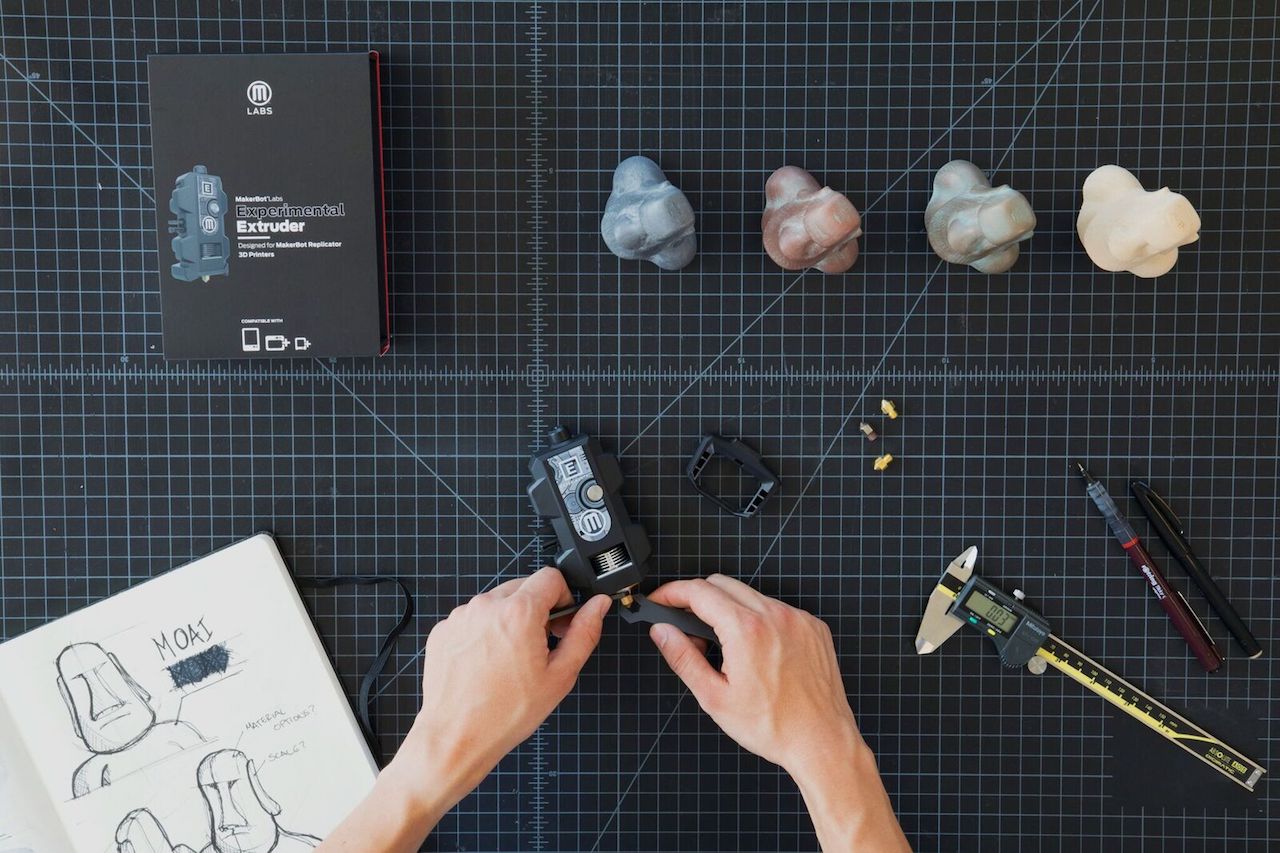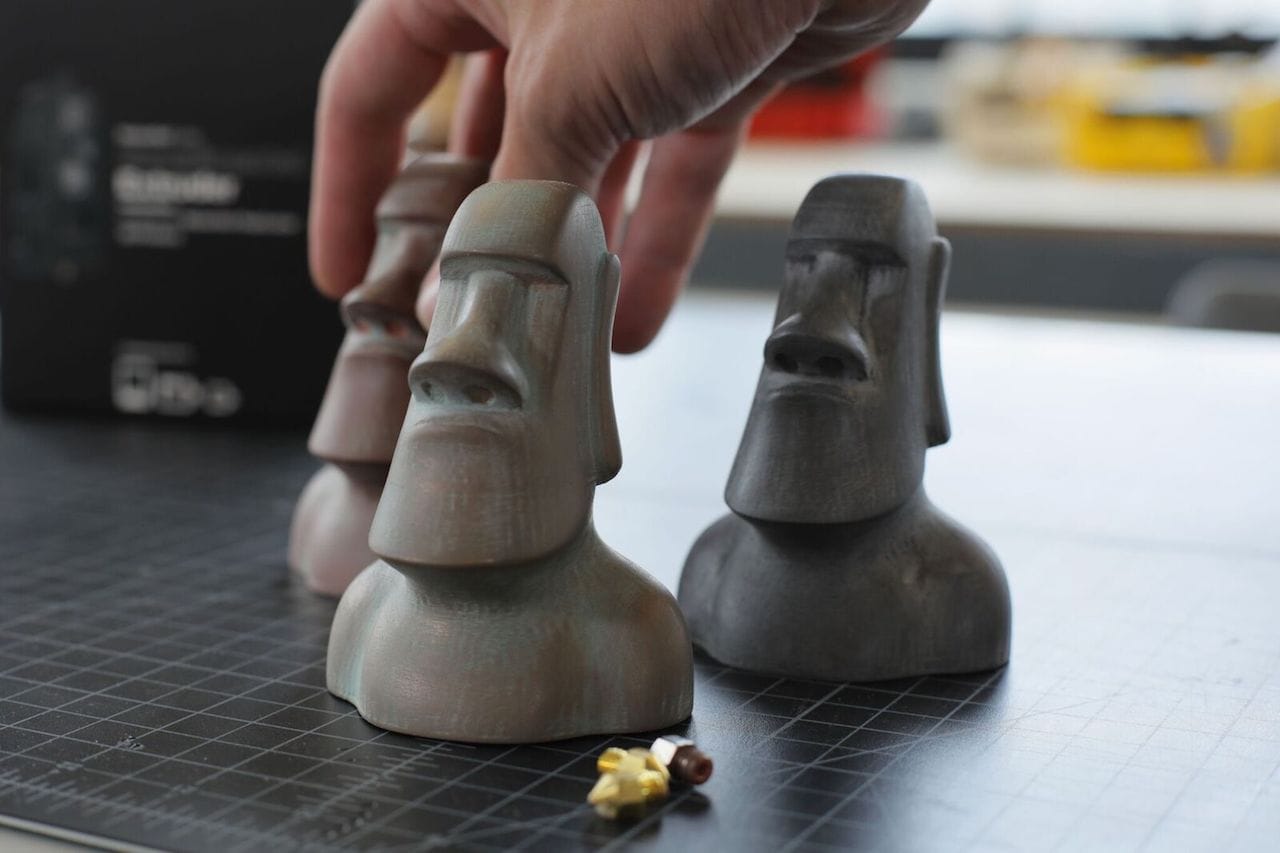
MakerBot has just announced a very interesting new program they call MakerBot Labs, which harkens back to their origins.
It’s been an incredible journey for MakerBot, which began in a NYC makerspace and eventually evolved into a massive corporation sold for hundreds of millions of USD$, and now migrating into a new professional market.
Along that journey they seemed to have lost their focus on “experimental” in their zeal to appeal to as many clients as possible through simplification of the 3D printing process with software and hardware changes.
Those simplifications were welcome by many, but those seeking ways to do more experimental work were left behind. At least, until the company announced their then popular MakerBot Replicator 2X, billed as an “experimental” machine. While their mainstream offerings were PLA-only, the “2X” was equipped with a heated print bed and fancy extruder/hotend that permitted use of a much wider variety of unusual materials, like flexible filament, for example.
The 2X persisted for a while, but always seemed to be on the “outside” of MakerBot’s product line, almost an afterthought. Then sometime in 2016 it finally disappeared from MakerBot’s lineup, leaving only easy-to-use PLA style machines.
Until today.
Today the company announced a program they call “MakerBot Labs”, which focuses on “unusual” use of their equipment. To facilitate the use of new materials beyond the PLA used in their mainstream equipment, they now offer the “Experimental Extruder”.
This new extruder is very similar to their current Smart Extruder+, but it has some interesting twists:
It has the ability to change nozzles. MakerBot will supply the following:
- A standard 0.4mm brass nozzle, like the normal extruder has
- A 0.6mm brass nozzle for faster (but coarser) prints
- A 0.6mm steel nozzle for faster prints of abrasive material such as carbon fiber or metal infused filament
- A 0.8mm steel nozzle for much faster (but even coarser) larger prints
The nozzles are swapped easily with a wrench after removing the clip-on blower vent. MakerBot has also published a “jig” on Thingiverse that permits more easier nozzle changes.

The experimental extruder approach means that you can instantly transform an existing (modern) Replicator into an experimental machine by swapping the extruder. No need for a new machine. And you can restore the “normal” mode by simply putting a “normal” extruder back in, for those who follow and require simplicity.
The experimental extruder is also said to be designed to be hacked, something MakerBot has not done for many years. They say:
With a modified thermal core and a more secure thermal barrier tube, the Experimental Extruder was redesigned to make changing nozzles easier.
I suppose hacking could mean more than just changing nozzles, but I don’t expect people to literally take apart their Experimental Extruder and redesign it.
The MakerBot Labs system also includes a community where those experimenting with different materials can share their results and exchange print settings. If there are a sufficient number of folks doing this, then this community might take off. MakerBot Print has been changed to permit the use of non-standard customized print modes specifically for this purpose.
A programmatic API has also been published on GitHub, and I’m not sure where this is going. They say:
Get under the hood of MakerBot hardware and software. Developers can access documentation about APIs and collaborate with other developers to interface with and expand the capabilities of MakerBot 3D Printers.
This might mean integration of 3rd party services into the standard MakerBot workflow, for example.
This is an interesting step for MakerBot, but I suspect it isn’t fully implemented yet. One glaring omission is the lack of a heated print surface, as that remains the same on the Replicator+. I could see MakerBot developing and later releasing a replacement print plate that is heated, enabling even more use of interesting materials.
Via MakerBot Labs

